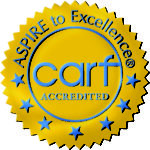THE PROGRAM
Learn more about our program here
THE RESIDENTS
Learn more about our residents here
THE GOALS
Learn more about the goals here
Each week, the facility goals for the residents are reviewed and updated as needed. Clients learn to take care of belongings and complete chores. As residents demonstrate increased responsible behavior and earn points accordingly, they can move up on their level and earn privileges based on their level.
Every Tuesday, residents participate in equine therapy at Green Acres Interactive Therapy; Wednesday, Teen Leadership group through the S.A.F.E. Alternatives program in Temecula; Thursday, Girls Circle group through S.A.F.E. in Temecula. At these groups the residents are with other teens their age to discuss social and community issues. Every Sunday, the residents participate in a money management outing.
There are several social outings that Plan-It Life, Inc. engages the resident in on a weekly basis, the Aquarium of the Pacific and the Riverside County Fair. Activities are planned every weekend that include Go-Cart racing, Bowling, Roller Skating, etc. The Murrieta Unified School District Foster Care Liaison is very involved with our residents and includes them in activities within the community. These include trips to local colleges, like Riverside Community College, First House tours, and trips to the state capital. One activity the girls participated in this past winter was the Annual Holiday of Hope Christmas Party that was held at Pechanga Resort. The residents are able to participate in different activities such as a formal dinner, train ride, bingo, cookie decorating, holiday snow, and photo booth activities.
Resources
Placement:
(951) 653-7561
Child Abuse Hotline:
(800) 827-8724
Suicide Hotline:
(800) 243-8255
Poison Hotline:
(800) 222-1222
Mental/Behavioral Health
Hotline:
(888) 743-1478 ext. 211
Ombudsman:
(877) 846-1602
Substance Abuse Screening
Assessment & Referral Center:
(909) 421-4601
California Youth Crisis Line:
(909) 843-5200
Transitional Ade Youth:
(909) 357-7194
Choices Clinic Medical & Counseling:
(909) 888-3100
Family Resource Center:
(909) 875-5288
Kids Come First Community Clinic:
(909) 673-9125






Plan-It Life, Inc. is a non-profit 501(c)(3) residential treatment center for at-risk youth, ages 12 -18. Plan-It Life, Inc. was founded in 2001 by CEO/ Administrator Shelia C. Marshall -McLean, LMFT, a Clinical Psychotherapist with a passion for fostering growth and self-awareness in youth. Mrs. McLean envisioned a safe haven where abused and/or neglected teens could come to learn social skills, decision-making skills, improve their education, receive anger management and therapy, as well as assistance in transitioning into the next phase of their lives.

